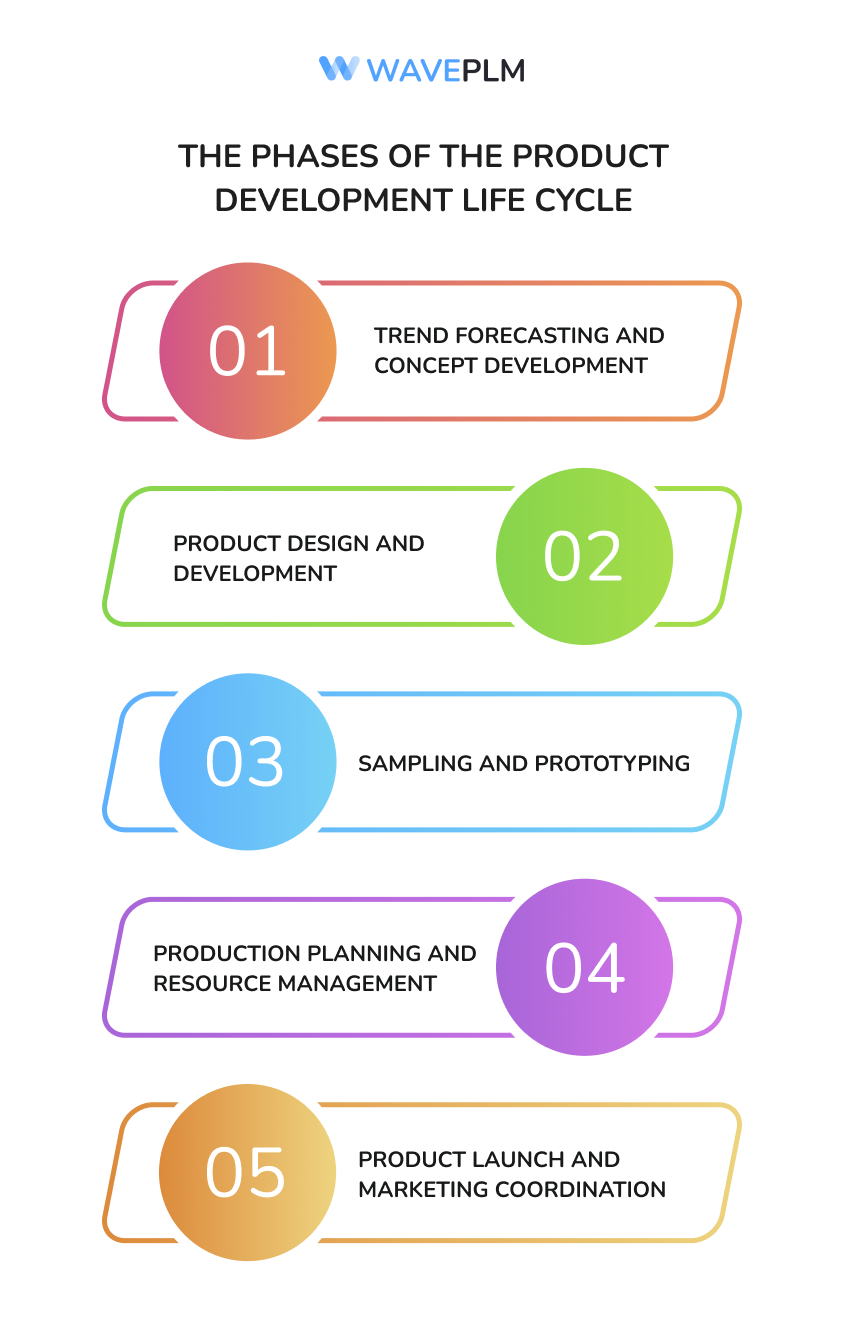
In the fast-paced fashion industry, staying on-trend is crucial. A new fashion trend can emerge overnight, and brands must act quickly to stay relevant. Consumers now expect fresh, unique styles with every season or social media post.
To keep up, fashion brands rely on technology that enables rapid response to these ever-shifting trends. Product Lifecycle Management (PLM) software provides that technology, empowering brands to streamline their design process, boost collaboration, and optimize production efficiency.
PLM software has become essential for fashion brands aiming to bring trend-responsive designs to market quickly. It manages every step of the product life cycle, ensuring that products go from concept to store shelves faster than ever.
For brands competing in an industry driven by constant change, PLM is more than a tool — it’s a necessity. Let’s explore how PLM software fuels innovation and agility in fashion, from design to production.
The Role of PLM Software in Fashion Innovation
Apparel management software like PLM plays a foundational role in the product development process. It connects all stages of product design and development into one cohesive system, offering a centralized hub for team members to collaborate.
This approach streamlines the design process and boosts communication across departments, allowing everyone involved to make real-time updates and adjustments. From trend forecasting to production planning, PLM software ensures that each phase aligns with brand goals and market demands.
In the fast-paced world of fashion, speed and precision are key. PLM software offers tools that keep design and production teams working efficiently, which is especially important in the competitive environment of trend-driven fashion. By reducing time-to-market and improving product quality, PLM helps brands stay on top of trends, reduce costs, and meet consumer demands.
The Phases of the Product Development Life Cycle
Creating a trend-responsive product involves multiple stages, from the initial concept to the final product launch. Traditionally, these stages were siloed, with different departments handling each part of the process separately. This approach slowed down the design process and often led to costly errors or missed trends. PLM software unifies these stages, allowing for seamless transitions between departments and faster overall production times.
1. Trend Forecasting and Concept Development
The first phase of product development is understanding what consumers want and predicting what will be popular. Trend forecasting is critical in the fashion industry, where preferences can change quickly. PLM software often integrates with trend forecasting tools, helping designers gather data on emerging styles, colors, materials, and patterns. With this data in hand, design teams can make informed decisions and create concepts that resonate with current consumer tastes.
By staying informed of trends through PLM, fashion brands can avoid producing items that may quickly become outdated. Instead, they create products that align with current or upcoming market preferences, increasing their likelihood of success. This proactive approach is especially useful for fast fashion brands that operate on tight schedules and need to react instantly to market changes.
2. Product Design and Development
Once the concept is established, the design team moves into creating sketches, selecting materials, and finalizing color palettes. In this stage, PLM software enables real-time collaboration, allowing designers, developers, and even external suppliers to work together. Design files, material specifications, and color choices are shared within the platform, making it easy to track updates and avoid miscommunications.
With PLM software, fashion brands can streamline the design process and reduce time spent on revisions. Designers can experiment with different options and get feedback quickly, leading to more refined products. Real-time collaboration also ensures that all stakeholders stay informed, reducing the risk of costly design errors.
3. Sampling and Prototyping
Prototyping is a crucial part of the fashion design process, allowing brands to test and refine their products before full-scale production. PLM software plays a key role here by simplifying the sample creation process. Teams can access previous designs, adjust them, and compare different prototypes within the PLM system. This enables rapid iteration and improvement, as well as more informed decision-making.
By managing samples digitally, PLM software reduces the need for physical prototypes, which can be costly and time-consuming. This is especially valuable for brands focusing on sustainability, as digital sampling cuts down on waste. With the ability to create digital prototypes, brands can move from sampling to production more efficiently, helping them meet tight timelines.
4. Production Planning and Resource Management
Efficient production planning is essential to meet deadlines and control costs. PLM software helps brands manage resources, track materials, and plan production schedules. By centralizing information on materials and suppliers, the software provides a clear view of each product’s needs, enabling brands to source materials efficiently and reduce waste.
In the production planning phase, PLM software enables teams to monitor inventory levels, anticipate potential supply chain issues, and adjust production schedules as needed. This level of control ensures that production runs smoothly, with fewer delays and reduced costs. Brands can allocate resources more strategically, minimizing excess inventory and aligning production with actual demand.
5. Product Launch and Marketing Coordination
The final stage in the product lifecycle is launching the product and marketing it to consumers. Here, PLM software helps brands coordinate between departments, ensuring a smooth product launch. By automating parts of the launch process, such as sending product information to retailers or updating inventory systems, PLM software frees up teams to focus on creative marketing efforts.
With PLM’s centralized platform, brands can coordinate campaigns and product launches with greater ease. Marketing teams have access to up-to-date product information, which helps them create more accurate promotional materials. This integration supports a cohesive brand message and a more efficient launch process, maximizing the impact of each new product.

How PLM Software Drives Trend-Responsive Design in Real Time
For fashion brands, responding to trends in real time is a game-changer. PLM software empowers brands to adapt quickly, facilitating real-time collaboration and rapid decision-making. With all data in one place, team members from agile design, development, and production can make adjustments instantly, ensuring that products align with current trends.
Real-time data access also reduces the need for rework, which can be costly and time-consuming. When everyone is updated with the latest information, brands can deliver improved products without delays. This agile approach enables fashion brands to stay relevant, produce high-quality products, and reduce costs simultaneously.
The Impact of PLM on Fast Fashion
Fast fashion brands face intense pressure to bring products to market in record time. PLM software supports this rapid turnaround by automating many aspects of design and production. Fast fashion relies on speed, and PLM helps brands meet these tight deadlines while maintaining product quality. By shortening the design and production life cycle, PLM software makes it possible to release new collections every few weeks.
Advantages of PLM for Fast Fashion
- Rapid Design Iterations: PLM software allows fast fashion brands to create designs, make revisions, and approve samples quickly. This rapid iteration is essential for brands that need to respond to the latest trends instantly.
- Cost Efficiency: Fast fashion brands often operate on thin profit margins. PLM software’s ability to reduce waste and streamline processes translates to significant cost savings.
- Enhanced Quality Control: Even at a fast pace, PLM software ensures that products maintain high standards. Consistency in quality helps fast fashion brands build a loyal customer base, even as they respond to market demands.
Sustainable Fashion and the Role of PLM
Consumers are increasingly interested in sustainable fashion, demanding eco-friendly practices from the brands they support. PLM software supports sustainability by enabling brands to track materials, manage waste, and streamline production. For instance, PLM can monitor the environmental impact of materials used, helping brands choose sustainable options.
Sustainable Practices Enabled by PLM Software
- Reduced Waste: By enabling accurate production planning and digital prototyping, PLM software minimizes material waste. Brands can plan production based on actual demand, reducing overstock and waste.
- Eco-Friendly Material Tracking: PLM software helps brands select sustainable materials and manage supplier data. This transparency enables brands to make eco-friendly choices that resonate with conscious consumers.
- Longer Product Life Cycles: By managing resources effectively, PLM software allows brands to create durable, long-lasting products. Extending product life cycles reduces the frequency of replacements, supporting a circular fashion economy.
Future Trends: How PLM Software Will Shape the Next Wave of Fashion Innovation
As the fashion industry continues to evolve, PLM software will play an even larger role in supporting trend-responsive design. The integration of artificial intelligence (AI) and machine learning into PLM systems may soon enable brands to predict trends with even greater accuracy. By analyzing social media trends and consumer behaviors in real-time, AI-powered PLM tools could give brands the insights needed to stay one step ahead.
Additionally, 3D design and virtual sampling are transforming the design process. By allowing brands to create digital prototypes, PLM software reduces the need for physical samples, cutting costs and reducing environmental impact. These advancements will help brands create innovative, trend-driven products faster, without compromising sustainability.
Conclusion
In today’s fashion industry, brands need to respond quickly to ever-changing trends. PLM software has become a crucial tool for managing the complexities of trend-responsive design, from initial concept to final launch. By centralizing information, streamlining collaboration, and optimizing production, PLM enables brands to bring trend-driven designs to market with speed and efficiency. For fashion brands looking to innovate and stay competitive, investing in PLM software is an essential step toward achieving agility, sustainability, and long-term success in a fast-moving industry.
Certainly! Here’s a call-to-action you could add at the end of the article:
Ready to see how fashion-driven PLM can elevate your brand? Discover all the possibilities Wave PLM can bring to your business. Schedule a demo today and get a 30-day free trial. Experience of how trend-responsive design and streamlined processes can set your brand apart in the fast-paced world of fashion.





Leave a Reply